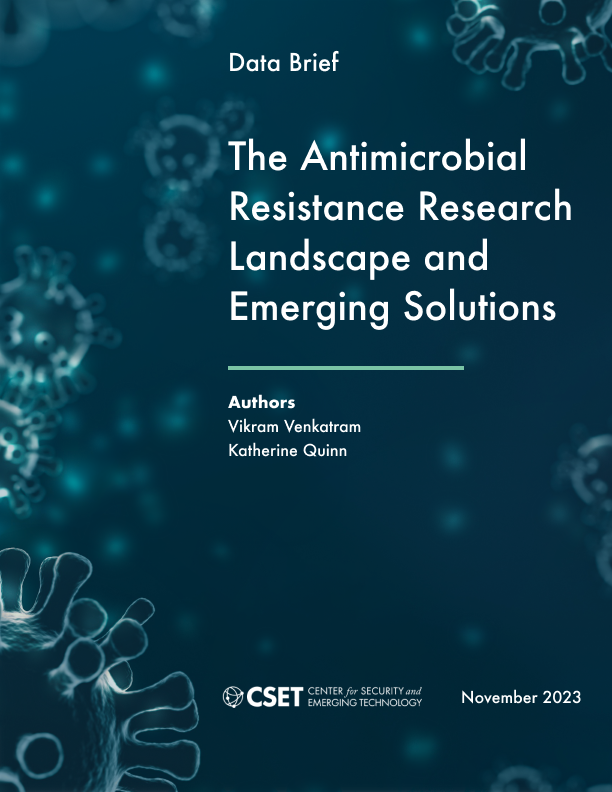Executive Summary
Pathogens developing resistance to common therapeutics complicate and undermine effective responses to global health crises. While antimicrobial resistance (AMR) is often discussed as a future crisis, AMR is, in reality, already a major global health challenge. Effective policy interventions to moderate and solve AMR require an understanding of the AMR research landscape—to inform choices about funding, incentivize novel drug development, and identify gaps in existing research and policy that require further attention.
This report analyzes 211,831 AMR-related research publications from CSET’s Merged Corpus that were published between 2000 and 2021, to track trends in research output, identify the leading countries and institutions publishing AMR research, major funders of this research, and patterns of international research collaboration. Our findings include:
- The amount of both overall microbial research and AMR-specific research increased between 2000 and 2021, as did the proportion of AMR-specific research to overall microbial research.
- Between 2000 and 2021, the U.S. produced the greatest number of AMR research publications, had some of the world’s most prolific organizations, and had the most cross-country collaborations. China was a close second, having recently overtaken the U.S. in AMR publications per year.
- Emerging technologies such as phage therapy, synthetic antimicrobial development, and therapies involving the microbiome offer promising solutions for AMR. Research related to these techniques remains a small percentage of overall AMR research, though it is increasing at a modest, steady rate and tends to be cited more often than other research.
- About half of AMR-related research published between 2000 and 2021 discussed the pathogens that the World Health Organization (WHO) considers the most dangerous, but those papers were not cited more than other AMR-related papers.
The U.S. government can play a role in addressing the global health problems posed by AMR. Legislation could help address two main problems: the lack of market incentives for antimicrobial drug development, and the need to improve antimicrobial stewardship and surveillance for new resistant pathogens. Increasing funding for AMR research and international cooperation would also be steps in the right direction, since resistance developed anywhere in the world could cross borders and threaten the United States.
